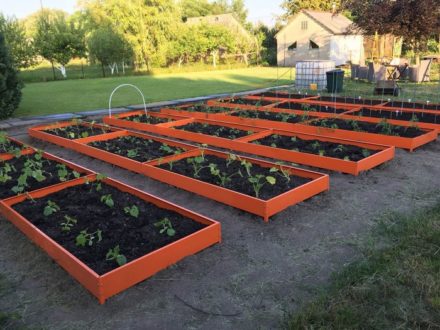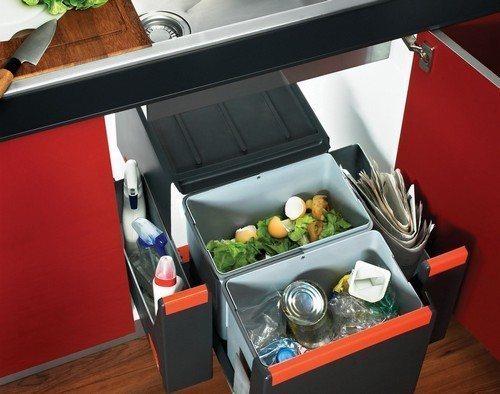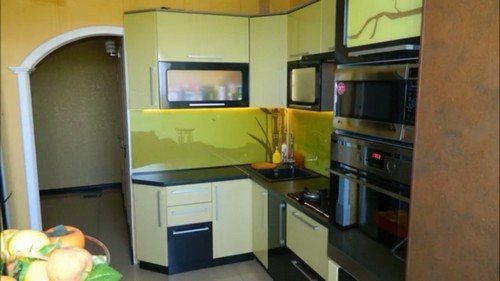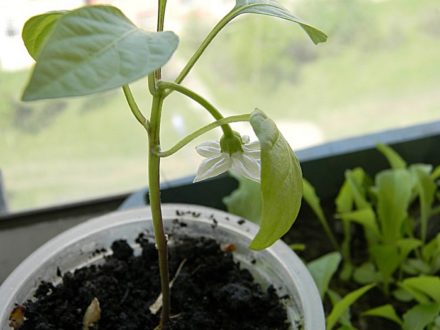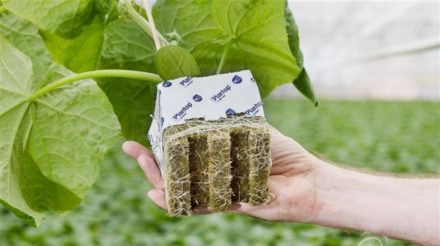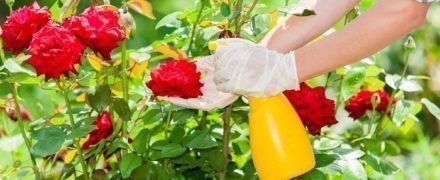Not all summer residents can boast of a large area. Sometimes, in a limited space, you have to place a residential building, a recreation area, a vegetable garden. You have to invent unusual ways of compactly placing beds. However, it is easier to adopt existing ideas for creating a compact vegetable garden in a small area.
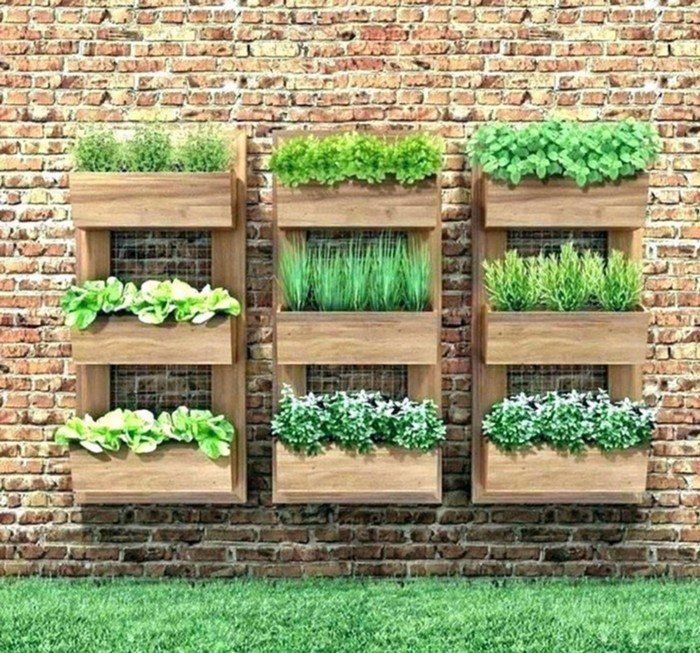
Vegetable garden on a fence
It is not necessary to occupy the main area for greens, strawberries or vegetables, because the beds can be placed vertically. For example, on a fence, if it is located on the sunny side. In this case, the fence will not only serve double duty, but will also usefully decorate the site. The idea itself can be implemented in different ways.
Not only traditional boxes and pots are used as containers. Some craftsmen have adapted plastic pipes for this purpose and successfully grow greens and vegetables with a compact root system in them. Containers can be fixed directly to the fence, but this is not necessary. Multi-tiered shelves are placed against the fence, trellises or rope nets are fixed to the canvas.
The method is only suitable for annual crops with minimal nutrition and moisture needs. On the fence (or close to it) vertically place:
- basil;
- dill;
- cilantro;
- thyme;
- parsley;
- onions;
- lettuce;
- strawberries;
- annual flowers.
The plantings will need to be watered and fed more often.Hydrogel mixed into the soil will partially solve the problem of moisture retention. The ideal option is a drip irrigation system. Hydroponics is also being considered. You can grow herbs and vegetables vertically not only on the fence, but also on the walls of the house and outbuildings.
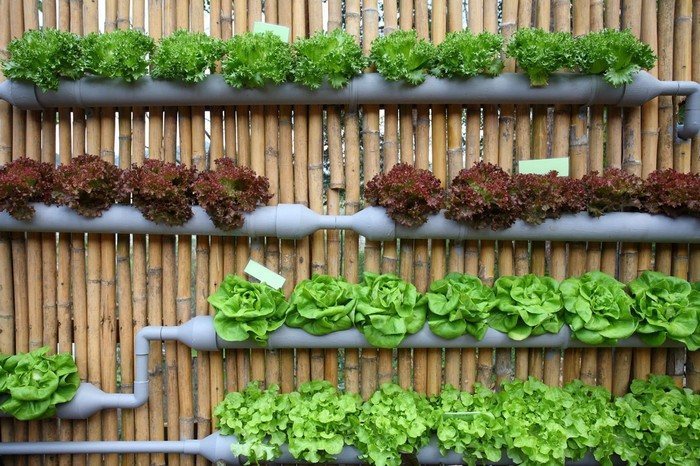
Multi-tiered beds
A multi-tiered bed is a structure of several levels, each of which contains planted crops. On sale you can find ready-made products of this type, the only disadvantage of which is the high price. Having a minimum of construction skills and suitable material, you can build such a bed with your own hands.
The tiers of the structure can have a round, square, triangular shape. The most popular beds are in the form of a pyramid. This structure must be installed in an open place to ensure access to light from all sides. To build multi-tiered beds use:
- tree;
- brick;
- plastic;
- slate;
- metal.
Each of these materials has its own advantages and disadvantages. For example, wood is easy to work with, inexpensive, but at the same time requires increased care and lasts only 2-3 seasons. Plastic is durable, but it is a fragile material that is sensitive to temperature changes. Slate is affordable, but no less fragile than plastic. Metal lasts a long time, but it is intimidating due to its price and requires special skills in work. The advantages of brick include its natural composition and durability, but the process of constructing such a bed will require physical and material costs, and disassembling it later will be problematic.
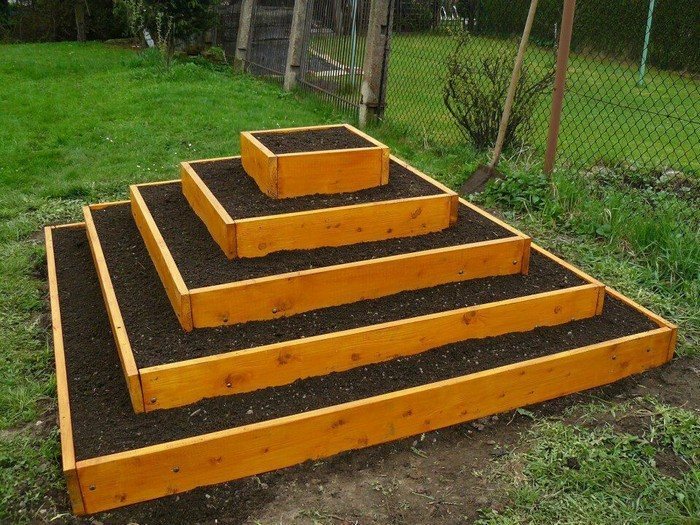
Container plantings
You can grow berries, flowers and various vegetables in containers. The advantage of such a “vegetable garden” is its mobility. Containers can be moved to another location at any time. Typically, this method is used when planting in the ground at the selected location is excluded. For example, if the area near the house is paved with tiles.
This method has several other advantages. Under the rays of the sun, the walls heat up and accumulate heat, and then release it, warming the plants. Gardeners do not have to worry about following the rules of crop rotation, which often becomes a problem in a small area. The plantings located on the south side of the building are protected from the cold wind.
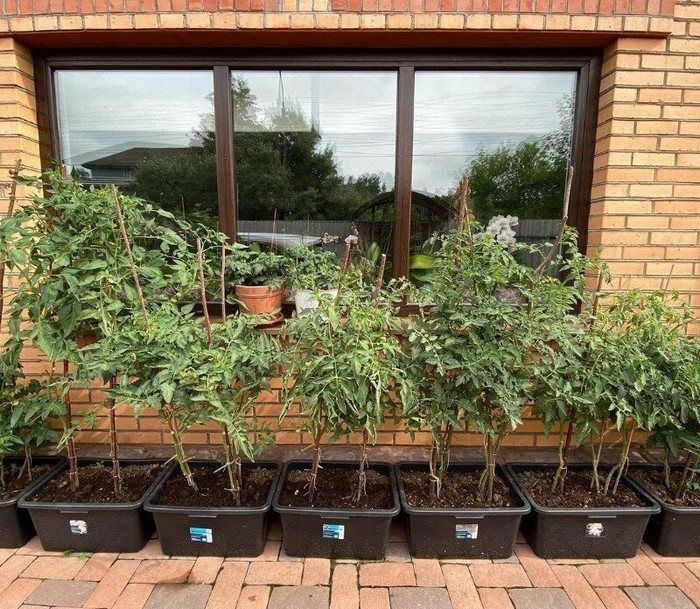
Growing on pergolas
Pergolas are convenient because they can be installed where the ground cannot be used. If you build such a structure over the garden path leading to the house, the result will be original, beautiful and ergonomic. Residents of the country house will be able to admire the greenery every time they walk through the living corridor, and the harvest ripening on the side planes will wait in the wings.
This growing method is suitable for miniature pumpkins, cucumbers, climbing beans, and peas. The vegetables listed above belong to the group of vines and are characterized by accelerated growth. Soon after planting, the plants, entwining the walls of the pergola, form a lacy green surface. Climbing crops can also be grown on arbors, arches, screens, and trellises. Flower lovers can also use this method of decorating a site.
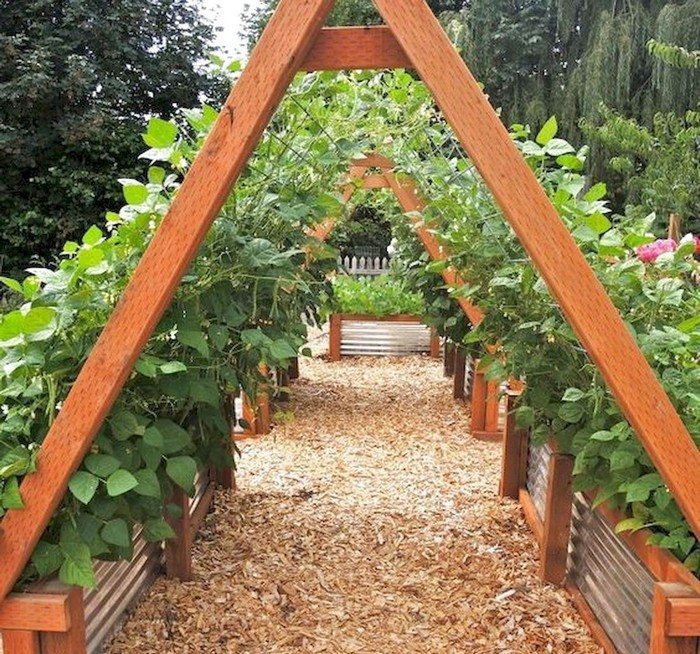
Planting vegetables in bags or barrels
The use of plastic bags or barrels follows the same principle, so you can use what is available to grow vegetables. This method makes it possible not only to save plot space, but also to get an earlier harvest due to accelerated heating of the soil.
Such plantings are protected from pests (moles, shrews), they are easier to cover in cold weather, and more convenient to water.
Method suitable for planting:
- zucchini;
- cucumbers;
- pumpkins;
- strawberries;
- potatoes;
- tomatoes;
- pepper;
- beans;
- eggplant.
The barrel is placed both vertically and horizontally, with a hole cut out on one side for planting vegetables. It is more convenient to grow strawberries in large plastic bags, making holes on the sides from bottom to top into which the seedlings are planted.
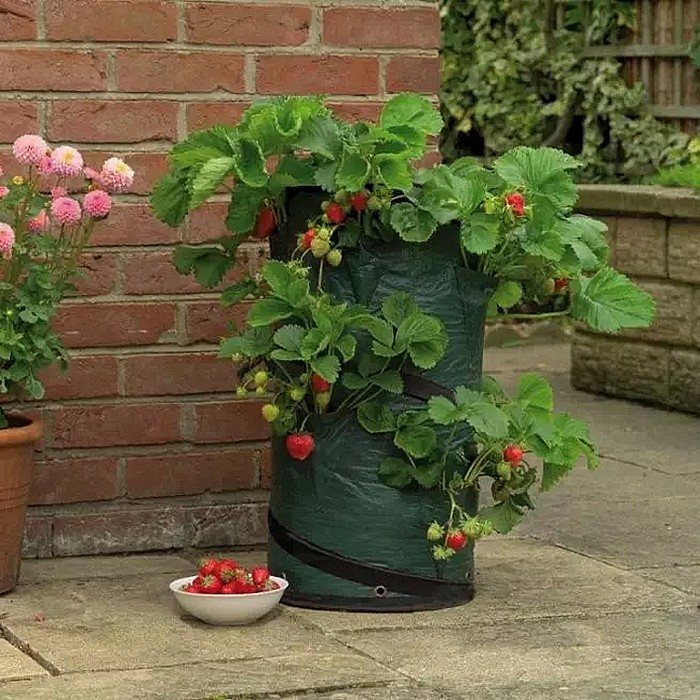
Thanks to interesting ideas, even a small area can accommodate a vegetable garden where you can grow herbs, vegetables, flowers and berries. By changing the location of structures, it is easy to change the visual appearance of the site. At the same time, every piece of land at the dacha will be used rationally.



